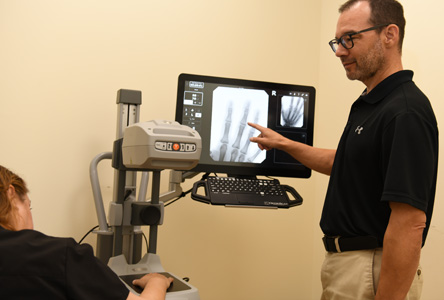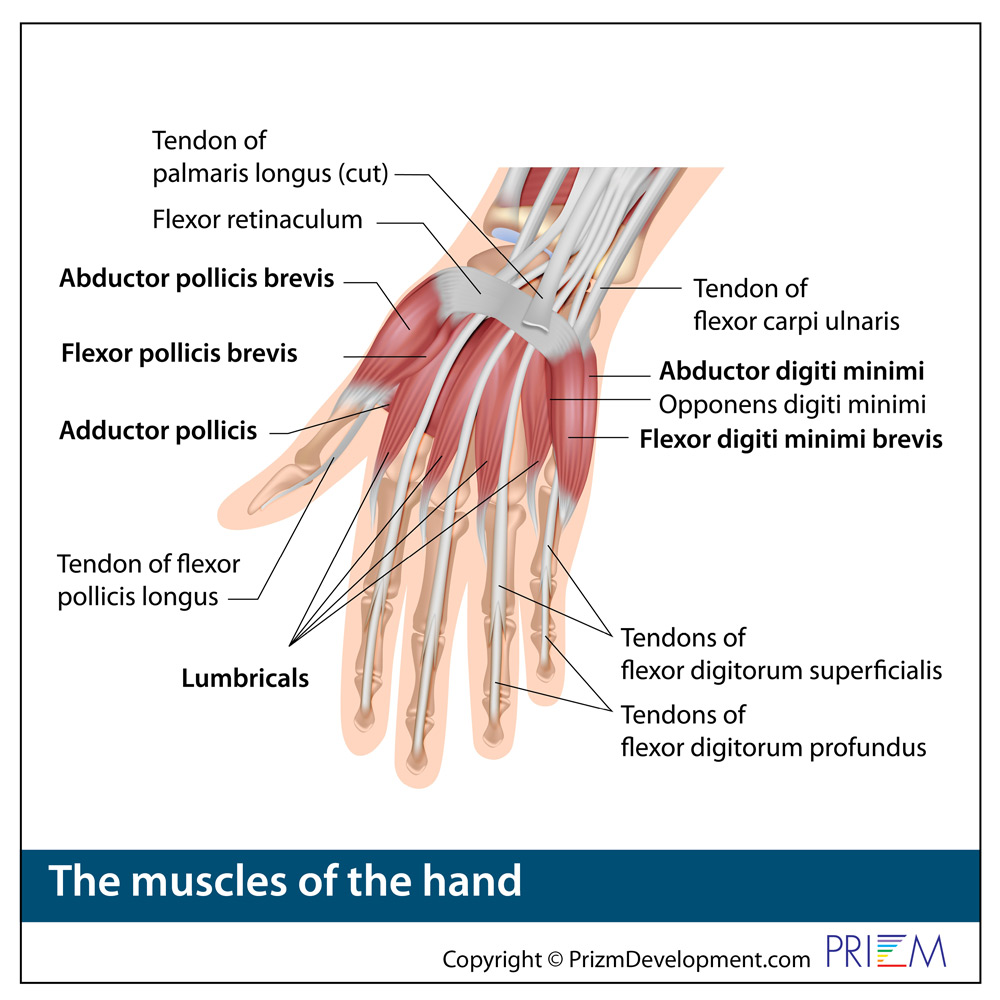Trigger Finger
![]() Stenosing tenosynovitis, commonly known as “trigger finger” or “trigger thumb”, involves the pulleys and tendons in the hand that bend the fingers. The tendons work like long ropes connecting the muscles of the forearm with the bones of the thumb and finger. In the finger, the pulleys are a series of rings that form a tunnel through which the tendons must glide. They also hold the tendons close against the bone.
Stenosing tenosynovitis, commonly known as “trigger finger” or “trigger thumb”, involves the pulleys and tendons in the hand that bend the fingers. The tendons work like long ropes connecting the muscles of the forearm with the bones of the thumb and finger. In the finger, the pulleys are a series of rings that form a tunnel through which the tendons must glide. They also hold the tendons close against the bone.
Trigger finger occurs when the pulley at the base of the finger becomes too thick and constricting around the tendon, making it hard for the tendon to glide freely through the pulley. Because of the increased resistance to the gliding of the tendon through the pulley, one may feel pain, popping, or a catching feeling in the finger or thumb. When the tendon catches, it produces inflammation and more swelling. The finger can become stuck or locked and is hard to straighten or bend.
Symptoms
The symptoms of Trigger Finger and Trigger Thumb usually begin with pain and discomfort at the base of the finger or thumb. This area is often swollen, tender to local pressure, and a nodule may sometimes be found in this area. When the finger begins to trigger or lock, the patient may think the problem is at the middle knuckle of the finger or the tip knuckle of the thumb, since the tendon that is sticking is the one that moves these joints.
You will have difficulty bending and straightening your fingers or thumb. It may feel like they catch or get stuck when trying to move them. The stiffness and catching may be worse in the morning or after periods of inactivity. In severe cases, the fingers or thumb can become stuck and unable to move.
Causes
Causes of Trigger Finger and Trigger Thumb are not always clear. The condition may develop more frequently in people with certain medical conditions, such as rheumatoid arthritis, gout, and diabetes. Local trauma to the palm or base of the finger may be a factor, but in most cases there is not a clear cause. The condition is more common among women than men and occurs most often in individuals between the ages of 40 and 60 years old.
 Treatment Options
Treatment Options
The goal in treating Trigger Finger or Trigger Thumb is to eliminate the catching or locking and allow full movement of the digit without discomfort. Swelling around the flexor tendon and tendon sheath must be reduced to allow smooth gliding of the tendon. Wearing a splint or taking an oral anti-inflammatory medication may sometimes help. Treatment suggestions may include changing activities to reduce swelling. An injection of steroids into the area around the tendon and pulley is often effective in relieving the trigger finger or thumb.
Surgery is recommended when other treatments have failed or if the thumb or finger is stuck in a bent position. The goal of surgery is to open the pulley at the base of the finger so that the tendon can glide more freely. Your Celebration Orthopaedics hand surgeon will discuss which surgical option is best for your condition. One surgery is performed on an outpatient basis. Your surgeon will numb the area and make a small opening on the palm side of your hand. Your hand surgeon will make an incision in the tendon sheath, creating a larger tunnel for the tendons to fit through and enabling them to glide easily.
Recovery
Recovery is individualized and dependent on the extent of the condition and the type of surgery performed. Your Celebration Orthopaedics hand surgeon will be able to tell you what to expect. You should be able to move your fingers or thumb immediately following surgery. Normal use of the hand can usually be resumed once comfort permits. You may experience discomfort or swelling for a short period. You may be prescribed hand therapy with one of our occupational therapists, and most achieve a full recovery in just a few weeks.

 Arm & Hand
Arm & Hand